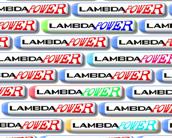 Page 8
Page 8
Planar Sensors
Before discussing Wideband sensors it should be noted that whilst the Wideband sensor is sometimes termed 'Planar', Bosch make a narrowband sensor that also has a planar construction. Instead of the solid electrolyte of the Zirconia types, this is replaced by ceramic laminate layers, and these laminate layers are silk-screen printed to configure them. The big advantage with this method of construction is that the heater can be buried within the sensor layers, thus making the sensor heat up to operating temperature much more quickly.
Wideband sensors
The current generation of five wire sensors are termed Wideband, Planar, UEGO or 'A/F ratio sensors' (Air/Fuel ratio sensors). They are much better at gauging exactly how much Oxygen is in the exhaust stream, rather than the simple switching action of the earlier narrowband sensors. The term 'planar' comes from the shape of the sensing element which is a flat strip (plane), rather than the thimble shape of traditional sensors.

Figure 11 - Cutaway view of a planar wideband sensor
Wideband sensors have only become necessary as engine management systems have evolved to the point where a more accurate sensor is required to meet low-emission vehicle targets - the old style of sensors conveniently had their characteristic 'switching point' for various historical reasons. The wideband sensor is an absolute requirement for lean-burn and fuel ionising mixture control strategies (eg. Volkswagen FSi) as well as diesel vehicles. The wideband sensor allows the ECU to gauge how well combustion across the whole mixture range.

Figure 12 - Wideband sensor output curve (red)
compared with narrowband sensor output range (green)
The sensor works on the same principle as an ordinary sensor (Nernst cell) but doubles up, using two cells with central shared chamber in the same package, this creates a device known as an oxygen pump, and with carefully designed electronics the current required to equalise the O2 concentrations across the two Nerst cells, ie. how much Oxygen we are required to pump across the cells, gives a proxy for O2 concentration.
Under cruising conditions in a modern engine, the AF ratio can extend to about 20:1 and the wideband lets us measure accurately at these lean mixtures.
The wideband sensor's output is non-trivial to interpret and requires careful heater temperature control and a precision current source. The five wire sensors are incompatible with earlier types. The action of the cells here described only happens at elevated temperatures of 600 degrees C or more, requiring a powerful heater.
Wideband sensors can be identified by their multi-wire harness (five or six wires). If the sensor has more cables, it is likely to be a NOX sensor.
Four Wire Sensors that provide Wideband output
There are a few types of automotive narrowband sensor that have such good quality output characteristics they can be used to gauge the full range of O2 content from 0% upwards. One type is the classic Bosch LSM11, since 2017 no longer manufactured, now superceded by our own LSM11B. The main advantage is simplicity of interfacing. A secondary advantage is the very smooth analogue output curve - wideband sensors will always suffer from quantisation issues due to the necessarily digital nature of the controller interface - this can be mitigated by careful electronic and software design.
Denso have also made a similar sensor they call an AF ratio sensor used from the late 1990s onwards in some Honda and Toyota models.
If you refer to Figure 12, the small curve contained within the two green lines can be reproduced by these sensors with great accuracy and repeatability, and using precision electronics we can derive the O2 concentration around stoichiometry and extending into the lean regime.
Such sensors are not useful within the rich regime, where a true wideband sensor is much better suited.
Wideband sensors for Motorsport applications
Wideband sensors are used by racing teams to accurately gauge high performance tuned engines. Lambda meters can be purchased that use a wideband sensor to allow data logging of mixture strength and other engine paramenters.
Wideband sensors designed for such uses are engineered to be more resilient, motorsport WB sensors are calibrated to have a wide output response, whereas the passenger vehicles are calibrated to have most accuracy around stoichiometry and very lean mixtures. A racing car will spend much of its time in the Rich regime of mixture strength, over-fuelling for various reasons eg. extra power, bore cooling.

